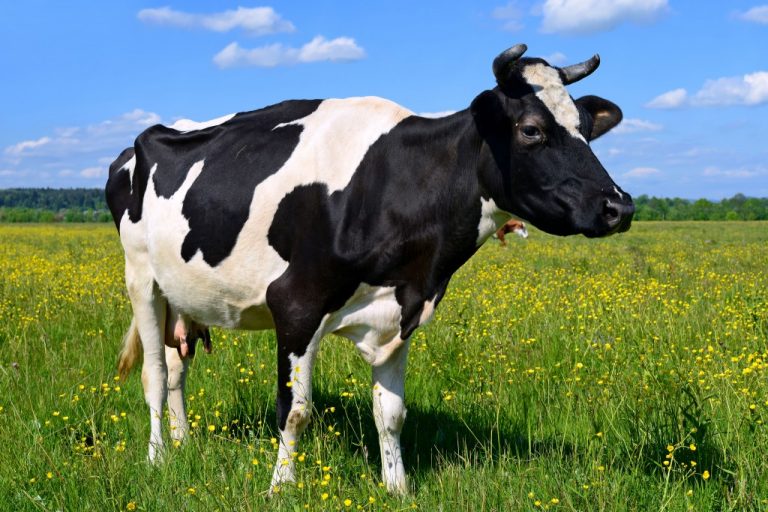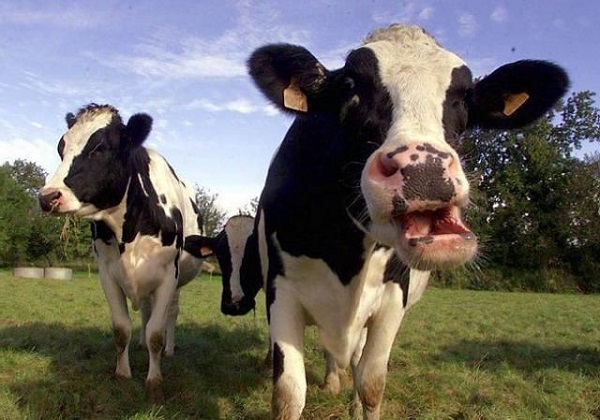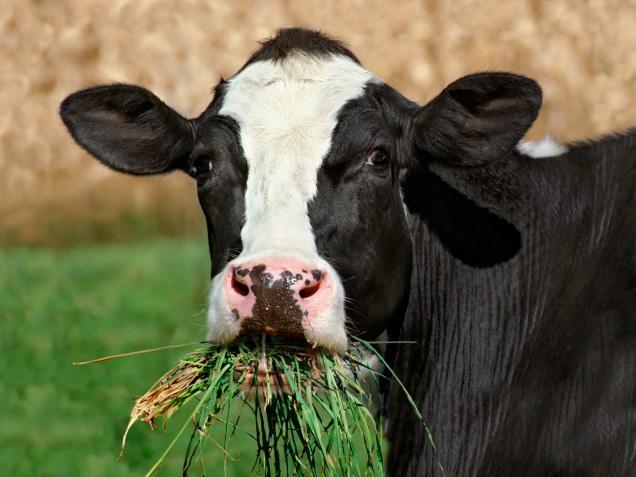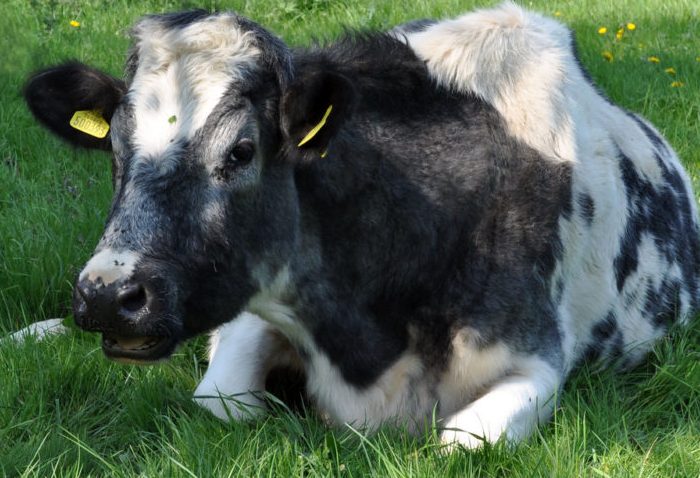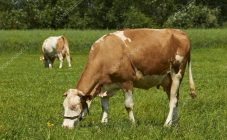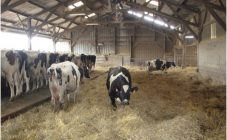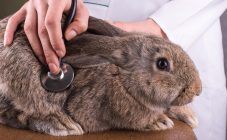Content:
Whether cattle are raised on a farm, or there is only one cow in the household, the rules of care are the same everywhere. The moment that cows constantly chew is the specificity of the species, which every owner should know about.
Breeding and care rules
Having decided to have a cow, comfortable conditions are created for her: a warm, clean barn with good ventilation. Other cultivation features are also taken into account:
- pets are shy creatures, so it is better to equip their housing away from noisy roads;
- a concrete screed on the floor is not recommended - a high risk of injury;
- so that the barn is not contaminated with manure, the floor surface is placed at a slight slope and equipped with gutters;
- the cow should have a fairly thick dry straw bedding, which is periodically changed;
- stalls are cleaned daily to keep livestock clean.
Each season requires a different approach to raising livestock. The health of cows depends on compliance with these rules.
Warm period
A prerequisite is free grazing from the warm spring months to the first frost. In a stall equipped with a drinking bowl with clean water and a manger for feed, the cow is taken only overnight. In the midday heat, cows are driven into the shade of trees or driven to graze in water bodies.
Winter
During the cold period, cattle are kept indoors, they are constantly monitored for cleanliness, the presence of water and food. In winter, cows need additional vitamins. The animals are periodically given a special injection or feeding is introduced into the forage. Also used are mineral additives, silage and compound feed.
Hotel period
The cows on the drift have their own diet: 2 months before giving birth, they are transferred exclusively to dry food. At the same time, you cannot overfeed the cow - due to obesity, the scar will regenerate for a long time. Harmful and underfeeding, leading to barrenness.
3 days before calving begins, the cow is provided with a separate paddock with clean soft bedding. Food is minimized, and just before childbirth, food is completely eliminated. These days they make sure that there is always clean water, pieces of salt and chalk in the pen.
Calves must be fed within an hour after giving birth by expressing colostrum from the mother's udder. From the 2nd week of life, young animals are introduced to complementary foods in the form of oatmeal jelly and semolina porridge. After 3 months, starting compound feeds are added to the diet and from six months they are transferred to adult nutrition.
Cow gum
Burenki are constantly chewing something, and if this process stops, the owner begins to worry, trying to find out why the cow has disappeared chewing gum. To find the cause, you need to understand the very mechanism that causes the chewing process.
Cow Digestion Feature
Observing an animal, ignorant people wonder what the cow is chewing. The digestive system of cows is arranged in such a way that all the food that gets into the proventriculus is belched back. This is due to the fact that coarse large particles of food irritate the walls.
The process includes nerve receptors, leading to a contraction of the proventriculus and esophagus. The feed moistened with juice returns to the oral cavity, the cow begins to chew this mass thoroughly, turning coarse fibers into more digestible food.
Constant chewing is not a pathology. On the contrary, it is the main condition for digestion. A healthy animal chews one lump about 30-70 movements (depending on the roughness of the food). Then comes the next act of ejection of gum (scientific name - rumination) and so on until continuity.
Don't worry after calving about what to do if the calf isn't chewing gum. In babies up to 2 weeks of age, who consume only milk, this mechanism has not yet been developed. The development of digestion will begin with the transition to a mixed type of feeding.
Process violation
In the described mechanism, sometimes malfunctions occur - the gum regurgitates less than it should be, it can disappear completely, or the process is accompanied by painful symptoms. Each case has its own reasons.
Painful condition
If the cow stretches the neck more than usual, while spreading the hooves wider, she has problems with belching. Confirmation of pain is the groan emitted by the animal. Other symptoms include:
- hunched over in a standing position;
- low mobility;
- getting up from a lying position in a "horse" way;
- painful reaction to touch.
This behavior is typical for a situation when metal objects get inside along with food. During the contraction of the chamber, they injure the walls of the esophagus, causing pain to the cow.
The act of chewing is also suppressed when the cow's jaw apparatus is damaged. Painful sensations do not arise here, but the cow cannot chew a lump.
Sluggish process
If the chewing process is sluggish, loss of appetite is noted. Diseases affecting the nervous system lead to oppression. Without examining the animal for the presence of pathologies, it is difficult to find the true cause of the sluggish process and choose the right treatment.
Complete absence of gum
When the production of gum began to disappear, the cause is sought in the work of the digestive system itself. First of all, the mesh and the scar are affected. The animal may not only lose its appetite - it has muscle atony.
The pathology is caused by a violation of the diet, in which rough food predominates (bad hay, straw, bran, beet cake, flour). The motility of the system is impaired, leading to a complete stop of digestion. As a result, beneficial microflora dies and putrefactive microorganisms develop. One of the symptoms of this stage is diarrhea.
The second reason for the complete absence of gum is the overeating of carbohydrates (juicy grass, cereals, melons, beets, potatoes). Acidosis develops, manifested by rapid breathing, diarrhea, lack of urination, and a decrease in temperature.
Overeating of corn at the stage of milky-waxy maturity, clover, alfalfa is widespread, when the whole herd suffers. When tympanic, the walls of the scar overstretch, and the motor skills decrease. The stomach does not work, and the digestion process is accompanied by the accumulation of gas.
How to solve the problem
When the cow does not have gum what to do, they decide urgently.Delay can lead to more serious problems and even death of the animal. Only an experienced cattle breeder will be able to help the cow on his own, but it is better for a beginner to immediately contact a veterinarian. It is necessary to treat a cow based on the diagnosis.
Help for breaking rumination
| Cause | Necessary measures |
|---|---|
| Atony of the scar | · Pour in a solution of sodium hydrochloride; · It is recommended to make subcutaneous caffeine and give Tempanol |
| Acidosis | · The stomach is washed with an alkaline composition; · Put a dropper with saline; · Introduce drugs that restore the heart rhythm; Use enzymes to normalize peristalsis |
| Tympany | · The fermentation process is removed with an aqueous solution of formalin with ichthyol; · Having made a puncture in the right place, release gases and inject with a probe "Creolin", "Tar"; Plant a healthy microflora |
| Traumatic reticulitis | Having identified a foreign body, they try to remove it using a magnetic probe. If this method is ineffective, surgical intervention is undertaken |
ethnoscience
The described problems with digestion in cows are as old as eternity, people have long learned to help animals using the home method. If a cow or calf does not have gum, treatment with folk remedies will ease the suffering. Each method is time-tested, so you can safely apply it:
- for a start, you need to limit the cow's diet, transferring only to water for a day - the cow should drink a lot during this period;
- Hellebore tincture will help to return the belching (10 ml is diluted in 0.5 l of water); the procedure is repeated every half hour until the gastric motility is improved;
- to reduce bloating, to establish secretion and peristalsis, you can use chamomile and wormwood tinctures;
- mineral hydrochloride water in the amount of 2 liters perfectly stimulates the digestive system.
Not all products given to an adult cow are suitable for calf treatment. They are recommended herbal decoctions of chamomile and St. John's wort, hellebore, cucumber or cabbage pickle, milk jelly.
Preventive measures
To exclude the lethargy of the digestive system or the complete stop of rumination, a number of preventive measures are taken in advance:
- all feed is carefully checked for the presence of foreign bodies;
- there should be a minimum amount of rough food in the diet;
- calves should not be fed large pieces of food;
- starvation of animals should not be allowed;
- keep livestock clean, preventing the development of diseases;
- subject cows to regular veterinary examinations.
They are prepared for calving in advance, taking into account the possibility of pathological childbirth.
Tips & Tricks
If a cow does not chew gum, what folk remedies to do is what to use, experienced veterinarians will tell you. They will also give advice on caring for animals:
- it is worth equipping the nursery in the barn with magnets that attract metal objects; this will reduce the risk of injury;
- cattle should be grazed only in proven areas free of garbage;
- youngsters are given hay before walking so that they do not overeat on grazing; the walk itself is limited to 3 hours;
- the transition to summer feeding after winter should occur gradually and stretch for 2 weeks;
- do not walk your livestock in legumes and cereal fields.
Whatever factor affects digestive problems, if during the day it is not possible to cause rumination, the animal must be discarded.
